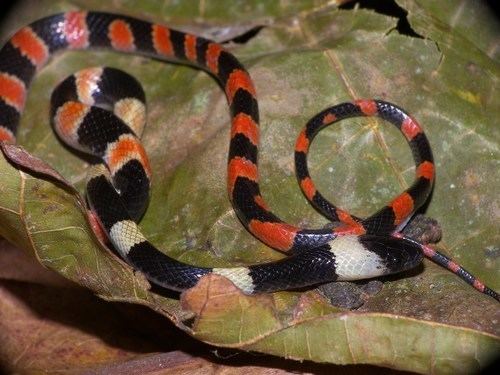Suborder Serpentes Subfamily Xenodontinae Higher classification Oxyrhopus Order Scaled reptiles | Subphylum Vertebrata Genus Oxyrhopus Phylum Chordata Rank Species | |
 | ||
Similar Oxyrhopus, Oxyrhopus guibei, Erythrolamprus, Oxyrhopus melanogenys, Pseudoboa | ||
Oxyrhopus petolarius
Oxyrhopus petola, commonly known as the false coral or calico snake, is a species of colubrid snake endemic to South America. According to Savage (2011) the correct scientific name should be Oxyrhopus petolarius.
Contents
Common names
Other common names for O. petolarius include calico snake and forest flame snake.
Geographic range
O. petolarius is found in central and northern South America, including Trinidad and Tobago.
Description
Adults of O. petolarius may attain a total length of 91 cm (36 in), which includes a tail 22 cm (8.7 in) long.
Coloration is variable. It usually consists of some combination of red and black rings or crossbands. In some individuals the light-colored crossbands are white instead of red on the anterior part of the body.
The dorsal scales are smooth, with apical pits, and are arranged in 19 rows at midbody.
Venom
O. petolarius is rear-fanged, and its saliva is extremely toxic to Anolis lizards.
Diet
O. petolarius feeds on lizards, frogs, small rodents, birds, and probably other snakes.
Subspecies
Some authorities recognize three subspecies of O. petolarius, including the nominotypical subspecies.
Nota bene: A trinomial authority in parentheses indicates that the subspecies was originally described in a genus other than Oxyrhopus.
Etymology
The subspecific name, sebae, is in honor of Dutch naturalist Albertus Seba.
